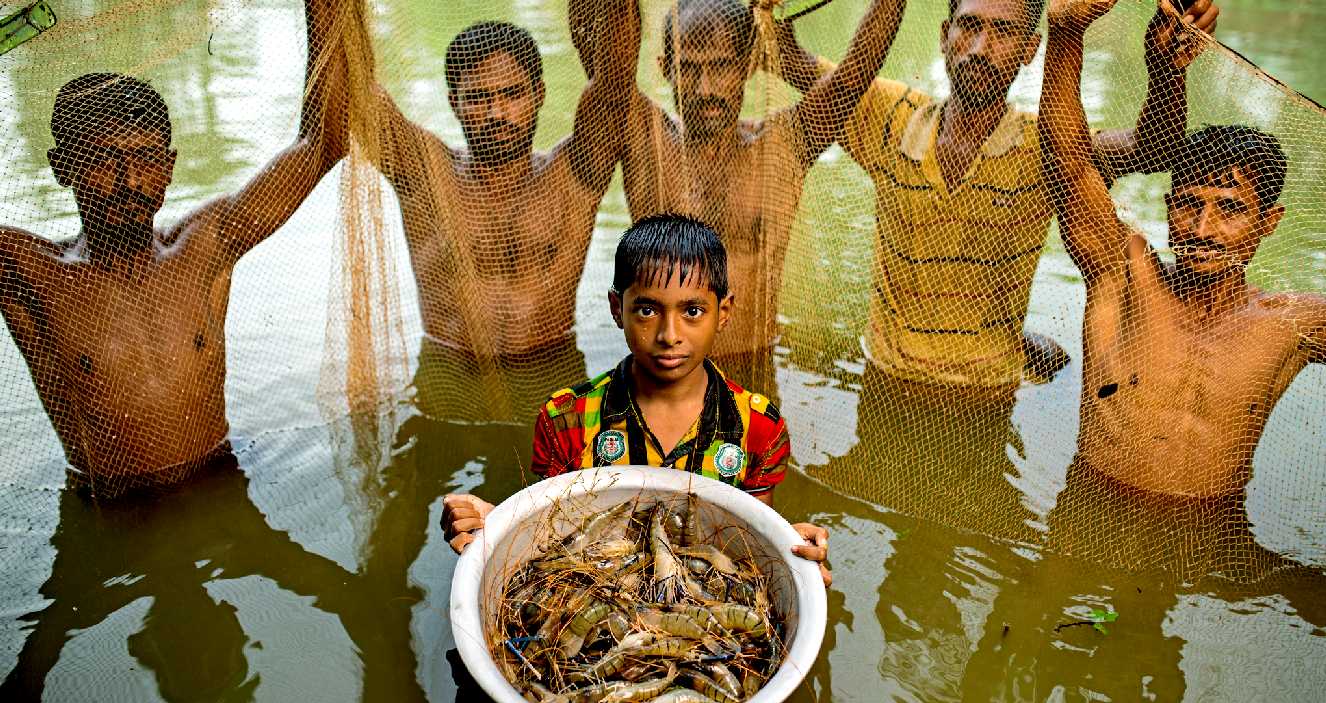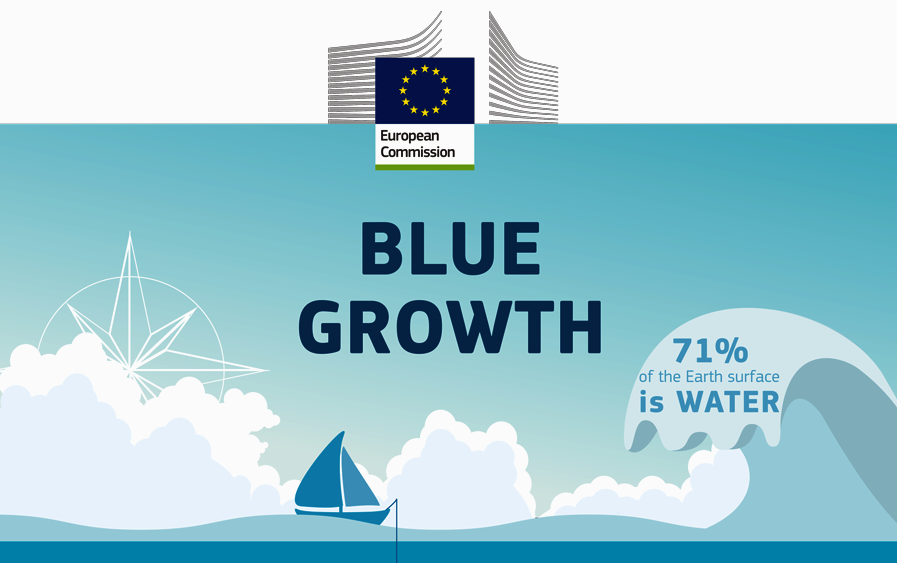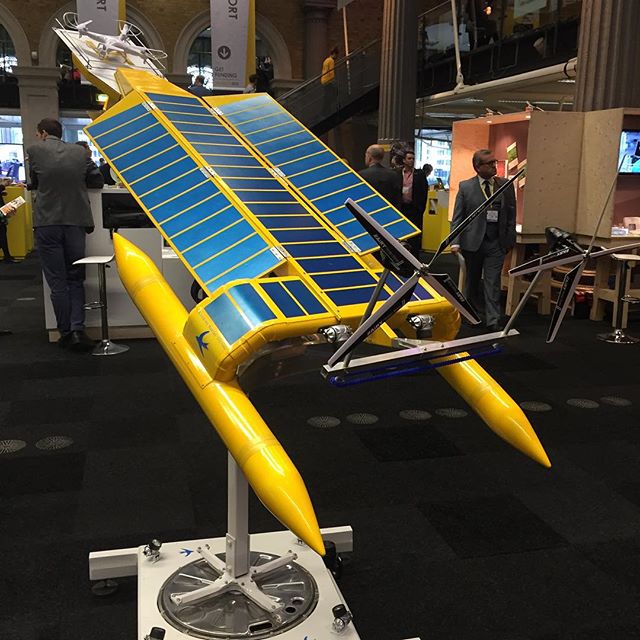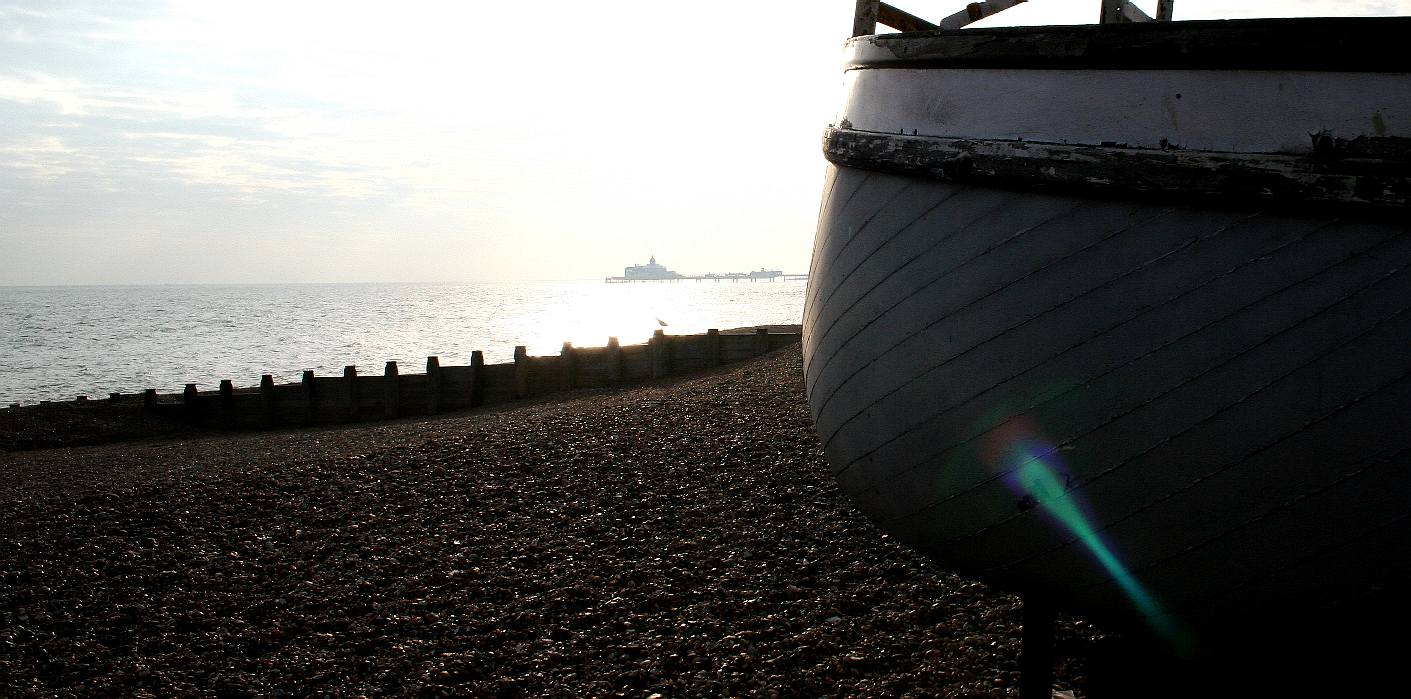|

AQUACULTURE
- What is the most climate friendly way of feeding the world? Is is
agriculture or aquaculture. Where do wild fish fit into the equation?
You
can help us to help the world feed itself. In not too many years we will
reach saturation point when it comes to land available for us to grow food
on. When that happens tensions will rise and more than likely boil over to
conflict. It is human nature.
Many
Governments are now looking at Blue Growth and
Blue Economy schemes to try
to stave off the inevitable, in the hope that the most intelligent species
on planet Earth will be able to moderate itself. With that firmly in mind,
Bluebird Marine (in association with others) is trying to help all nations make the best of the oceans
that lap at their shores.
SeaVax
is a versatile ship that can be adapted to recover spilt oil and catch
fish or fish food, but the main reason for developing such an innovative
vessel is to capture plastic
waste, not fish at all and certainly not
smaller marine life that may float in the plastic soups (gyres) revolving
in our oceans.
We
believe that all of the measures identified and proposed below are
necessary if the world is to achieve a truly Circular Economy for a
sustainable future.
BY
LAND OR SEA?
The environmental challenges posed by agriculture are huge, and they’ll only become more pressing as we try to meet the growing need for food worldwide. We’ll likely have two billion more mouths to feed by mid-century
- more than nine billion people. But sheer population growth isn’t the only reason we’ll need more food. The spread of prosperity across the world, especially in
China and
India, is driving an increased demand for meat, eggs, and dairy, boosting pressure to grow more corn and soybeans to feed more
cattle, pigs, and chickens. If these trends continue, the double whammy of
population growth and richer diets will require us to roughly double the amount of crops we grow by 2050.
Agriculture’s footprint has caused the loss of whole ecosystems around the globe, including the prairies of North America and the Atlantic forest of
Brazil, and tropical forests continue to be cleared at alarming rates. But we can no longer afford to increase food production through
agricultural expansion. Trading tropical forest for farmland is one of the most destructive things we do to the environment, and it is rarely done to benefit the 850 million people in the world who are still hungry. Most of the land cleared for agriculture in the tropics does not contribute much to the world’s food security but is instead used to produce cattle, soybeans for livestock,
timber, and palm oil. Avoiding further deforestation must be a top priority.

UN FOOD & AGRICULTURE - UNLOCKING THE POTENTIAL OF THE SEAS
Today’s fisheries sector hosts a multibillion dollar industry that is a vital source of food and nutrition, employment, trade, economic wellbeing and recreation.
The concept of a "blue economy" came out of the 2012 Rio+20 Conference and emphasizes conservation and sustainable
management, based on the premise that healthy ocean ecosystems are more productive and a must for sustainable ocean-based economies.
To support a shift to this new approach, FAO launched the Blue Growth Initiative, through which it will assist countries in developing and implementing blue economy and growth agendas.
Why blue growth?
Blue growth looks to further harness the potential of oceans, seas and coasts to:
*
Eliminate harmful fishing practices and overfishing and instead incentivize approaches which promote growth, improve conservation, build sustainable fisheries and end illegal, unreported and unregulated fishing
* Ensure tailor-made measures that foster cooperation between countries
* Act as a catalyst for policy development, investment and innovation in support of food security, poverty reduction, and the sustainable management of aquatic resources.
How will it be implemented?
Aquaculture – promote policies and good practices for
farming of fish, shellfish and marine plants in a responsible and sustainable manner
Capture fisheries – support implementation of the Code of Conduct for Responsible Fisheries (CCRF) and related instruments to restore fish stocks, combat IUU and promote good fish production practices and growth in a sustainable manner
Seafood systems – promote efficient seafood value chains and improved livelihoods
Eco-system services – Promote regulatory regimes and approaches to restore vital coastal habitats, biodiversity and eco-system services (incl. carbon capture, storm and wave defenses, tourism etc).
HOW
CAN SEAVAX HELP?
If
it is true that the fish in our oceans are declining at the rate of 0.8%
per year since 1970, then significant numbers of clean running ocean filtration
machines could make a significant contribution to restoring a healthy
environment for fish to breed in. We are developing a low cost system that
every country in the world could afford to operate - and eventually reap
the rewards of better food security. SeaVax can even be adapted to be a
fishing boat designed to produce low cost fish meal - but that is way in
the future. For now we simply want to fight against the build up of ocean
plastic. Read about what the experts have to say below and you might agree
with us that we should all pull together to conserve what we have. We are
hoping that this will include big hitters like President
Trump.

WB
ON AQUACULTURE
* A new World Bank report estimates that in 2030, 62% of the seafood we eat will be farm-raised to meet growing demand from regions such as Asia, where roughly 70% of fish will be consumed. China will produce 37% of the world’s fish, while consuming 38% of world’s food fish.
* By producing more seafood that is affordable and rich in nutrition, aquaculture can help improve food security and livelihoods for the world’s poorest.
* The rise in seafood demand gives countries the opportunity to expand and improve responsible fish and shellfish farming practices.
Nearly two-thirds of the seafood we eat will be farm-raised in 2030. This is according to
"Fish to 2030: Prospects for Fisheries and Aquaculture," which concludes that as sources from wild capture fisheries approach their maximum take, aquaculture
- or fish farming - will help satisfy the growing global appetite for fish and seafood.
The new World Bank report projects that in 2030, aquaculture will produce half of the world’s supply of fish, including fish for food and other products such as fishmeal.
Meanwhile, 62% of the seafood that will end up on people’s plates will come from
fish farms, which will grow production to meet rising demand
- especially from Asia, where roughly 70% of fish will be consumed. In 2030, an emerging middle class in
China will become a particularly large market for fish. With increased investment in aquaculture, China will produce 37% of the world’s fish and consume 38% of the fish the world eats, the report estimates.

HUFFINGTON POST SEPT 2016
- Blue Growth by Design - An Ocean of Opportunity
Awaits
Humanity’s relationship with the ocean can be summed up in two words: exploration and exploitation. Together, they are driving a sea change in the health and future prospects of the ocean. Sustaining the energy, food, minerals and jobs that make up our Blue Economy—while at the same time conserving the ocean, has become one of our most important collective global challenges.
Given how vital a healthy ocean is, I am delighted that countries have created their own annual international conference - the Our Ocean Conference. First launched by
U.S. Secretary of State
John Kerry in 2014 it is being held this year in
Washington, DC September 15-16th. The Blue Economy challenge will be firmly on the table, and for us at The Nature Conservancy (TNC) this is an opportunity to shift the narrative away from viewing the ocean as another problem, and instead treating it as part of the solution.
Our global Blue Economy is growing so rapidly that the impacts have not yet been fully assessed. From oil and gas to offshore wind, we increasingly rely on
energy that comes from the ocean. We have developed an aquaculture industry that provides half the world’s seafood and is the fastest growing food production sector. Marine tourism is projected to triple in the next 15 years.
Investment in the Blue Economy is soaring, and many sectors are set to grow exponentially by 2030; offshore wind by as much as 8,000%, and aquaculture and fish processing by over 300%. The potential for food, jobs and renewable energy production is enormous.
But, alongside these rewards come huge risks. We know that the ocean is bearing the brunt of climate change: it has absorbed 90% of our excess heat and 25% of our carbon emissions, causing it to become 30% more acidic. According to the UN Food and Agriculture Organization, 85% of
global fish stocks are “overexploited, depleted, or recovering from depletion,” while illegal fishing costs coastal nations up to $25
billion a year.
Our efforts must ensure that developing the Blue Economy does not come at the cost of ocean health. The Organization for Economic Cooperation and Development (OECD) projects that under a sustainable scenario, with high economic growth and low ecological deterioration, the ocean economy will more than double its global value added to reach $3.2 trillion by 2030.
The question for me is not if we will continue to explore the ocean and exploit its resources; it’s how, when and where we should do it. Blue Growth by Design is an approach to ocean conservation and management that balances the interests of people and nature, while ensuring that conservation has a voice. At TNC, we believe that the most important levers are:
1) international, collective action;
2) smarter use of sea space based on new science and technology;
3) increased investments in natural solutions to address climate change; and
4) strong, cross-sector collaboration.
More than 40% of our planet - the high seas - lies outside any national jurisdiction. Fish stocks, pollution and climate change aren’t contained by national boundaries and to manage resources, we need international cooperation and legally binding laws and treaties.
Blue Growth and climate change are exerting growing pressure on ocean areas, only about 3% of which are protected. The “30/30” target, to protect 30% of the ocean by 2030, is an important goal to help offset this pressure and build ocean resilience. But simply setting targets is not enough. Establishing smart, effective marine protected areas (MPAs) based on scientific planning and strong management will preserve ocean wealth.
The reality is that little can be achieved without funding. The ocean covers over 70% of our planet, yet in 2013 less than 5% of the
$9.7 billion donated to environmental issues was devoted to marine causes.
In response, TNC is using innovative financing methods, like first-of-their-kind debt conversions, to leverage more of this money. For example, in February 2016, with a combination of grant and impact capital, we helped the Government of the Seychelles finance a more than $20
million debt buy-back from its Paris Club creditors, to help create a marine spatial plan for their entire Exclusive Economic Zone (EEZ) and place 30% of it - 400,000 km2 - into biodiversity protection zones. By working with other Small Island Developing States to provide similar financial opportunities, we intend to facilitate an additional 2 million km2 of MPAs.
None of this work can be done alone. I know from my years as EU Commissioner for Maritime Affairs that it’s essential to build strong partnerships. TNC is working with fishermen, governments, scientists, the insurance industry, the tourism industry, the
World
Bank, the Red Cross, and business to help drive the changes we need.
We see the current boom in ocean industries as a call to action, a chance to design sustainable Blue Growth. I am confident that together we can get this right.
By Maria
Damanaki
POPULATION GROWTH ESTIMATES
Current UN projections show a continued increase in population in the near future (but a steady decline in the
population growth rate), with the global population expected to reach between 8.3 and 10.9 billion by 2050. UN Population Division estimates for the year 2150 range between 3.2 and 24.8 billion; mathematical modeling supports the lower estimate. Some analysts have questioned the sustainability of further world population growth, highlighting the growing pressures on the environment, global food supplies, and energy resources. Solutions for feeding the nine billion in the future are being studied and documented. One out of every seven people on our
planet go to sleep hungry. People are suffering due to overpopulation, 25,000 people die of malnutrition and hunger related diseases everyday.

UNICEF
According
to Unicef too many children don’t have the food they need. Every minute of every day, more than 5 children die as a result of malnutrition, according to estimates.
Millions more live with the lifetime effects of not having the food they need to live and grow – physical disabilities and learning difficulties.
The start of a child’s life is a critical time. Without enough of the nutrients they need at this vital time, children’s bodies and brains don’t develop the way they should.
Unicef provides 80% of the world’s life-saving emergency food. They help families and communities keep their children healthy and well nourished, through education and by providing special supplements, supporting breastfeeding and making sure mums have enough of the right things to eat too.
By treating malnutrition in the first 1,000 days of a child’s life, Unicef has helped cut the number of children badly affected by stunting – children’s bodies and brains not growing the way they should – by nearly 100 million since 1990.
CONTACT
UNICEF
Unicef
House
30a Great Sutton
Street
London
EC1V 0DU
by telephone: 0300 330 5580 (Mon-Fri, 8am-6pm)
by text message: 07860 027 540 (UK residents only)*

THE
WORLD FOOD PRIZE LAUREATE AWARD CEREMONY
This event is held in the magnificent Iowa State Capitol building in Des Moines, Iowa. The ceremony rivals that of the Nobel Prize, drawing over 800 international guests. Each year, world-class performers take the stage to honor the World Food Prize Laureate, and the event is televised and webcast live. Past performers have included Ray Charles, John Denver, Chachi Tadesse, Kathak Gunjan, the Tokyo String Quartet, and Achinoam Nini (Noa). Following the Ceremony, the celebration continues at the Laureate Award Dinner, held in the Capitol rotunda.


SEE
THE LIGHT
- These limited edition pens are available in pink and teal in support of our SeaVax
"Feed The World" project. They have polished hard chrome barrels
and colored caps with our bird logo engraved into the cap. They have soft
silicone rubber tips for your mobile phone and
computer touch screens and
a built in LED torch at the opposite end - ideal for conferences,
theatres, clubs or doing your homework when the lights are low. They come
complete with batteries and gift boxes if this is a present for a loved
one.
ACIDIFICATION
- ADRIATIC
- ARCTIC
- ATLANTIC - BALTIC
- BAY BENGAL - BERING
- CARIBBEAN - CORAL - EAST
CHINA
ENGLISH CH
-
GOC - GUANABARA
- GULF
GUINEA - GULF
MEXICO
- INDIAN
-
IRC - MEDITERRANEAN -
NORTH SEA - PACIFIC
- PERSIAN GULF - SEA
JAPAN
STH
CHINA - PLASTIC
- PLANKTON - PLASTIC
OCEANS - SEA
LEVEL RISE - UNCLOS
- UNEP
WOC
- WWF
AMAZON
- BURIGANGA - CITARUM - CONGO - CUYAHOGA
-
GANGES - IRTYSH
- JORDAN - LENA -
MANTANZA-RIACHUELO
MARILAO
- MEKONG - MISSISSIPPI - NIGER - NILE - PARANA - PASIG - SARNO - THAMES
- YANGTZE - YAMUNA - YELLOW
FOOD
SECURITY LINKS
& REFERENCE
http://www.centerforoceansolutions.org/
https://www.unicef.org.uk/what-we-do/life-saving-food/ http://www.nationalgeographic.com/foodfeatures/feeding-9-billion/ https://www.worldfoodprize.org/
http://www.canwefeedtheworld.org/
https://en.wikipedia.org/wiki/World_Food_Programme https://en.wikipedia.org/wiki/Food_security http://www.worldbank.org/en/topic/foodsecurity/ http://www.foodsecurity.ac.uk/

SEAVOLUTION -
This solar powered work horse may be what the world is looking for to
provide cleaner oceans for wild fish to re-populate.

|









